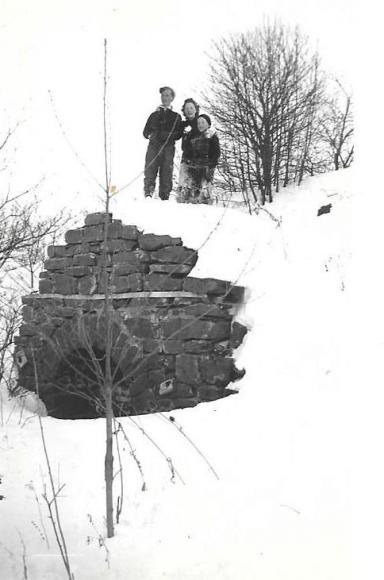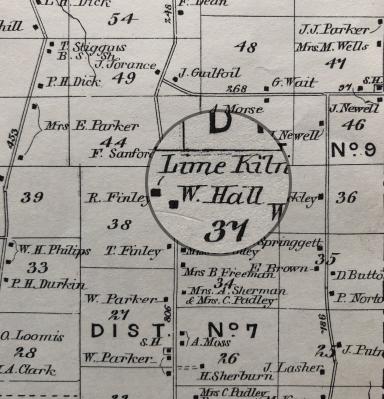If you find errors OR have additional information about this site, please send a message to contact@waynehistorians.org.
Limekiln
| Historic Site #: | 13-046 (Gone) Type: H1 | Town: | Walworth | ||
| Site Name: | Limekiln | GPS Coordinates: | 43.168367, -77.273251 | ||
| Address: | 4528 Walworth-Ontario Road, Walworth, NY | ||||
| Description: | |||||
| As of 2018 there are no visible ruins. The photos here are from several years ago. There is conflicting information about when the limekiln was established here. See below. | |||||
 |
 |
| from Walworth Historical Society files; Dewind children | Wayne County Atlas 1874 |
| Photo by Bob Mogray |
| Historic narrative: | |||||
| According to Anna May (about 1955): In 1876 Warren Hall purchased a farm about two miles north of Walworth at the foot of the Finley hill and gave it to his son, William Hall, as a wedding present. Williams found limestone on his farm. He built an intermittent kiln of the dugout style into the side of a hill. It was constructed of ordinary rock mounted on masonry. The limestone was quarried from the ground by hand and drawn to the kiln by horses and wagon. Seventy two hours were required for each firing. Heat was supplied by a wood fire at the bottom. Mr. Hall bought about every woods for miles around in order to have enough to keep the kiln going. Mr. Hall operated his kiln until 1893. According Emily Huntley via Dorothy Petty: North of Walworth, where Jim and Diane Lucey live, was the old lime kiln formerly extensively used and from which the limestone used in building the Baptist Church was quarried. In Mr. Tadwell's diary (he lived at this site): The plaster on the walls of the Baptist church came from there. The Second Baptist Church was built in 1834. IF the facts reported above are correct, then it's possible that another the lime kiln was established prior to this one. As for quarrying limestone for the church, we do know that there is limestone beneath the surface in many places around Walworth. At this point we have no other information, so further study is needed. The Wayne County Atlas published in 1874 shows a limekiln at this location. | |||||
